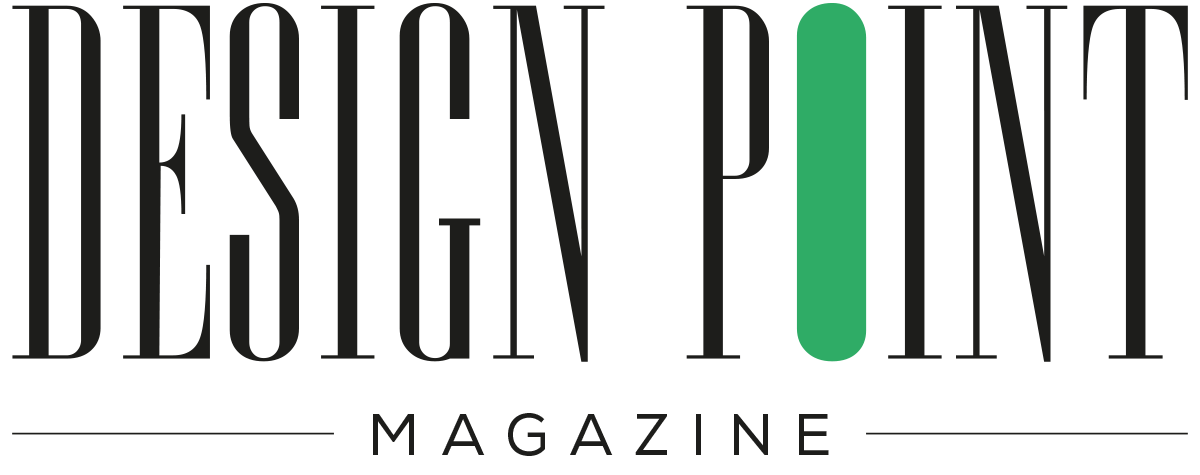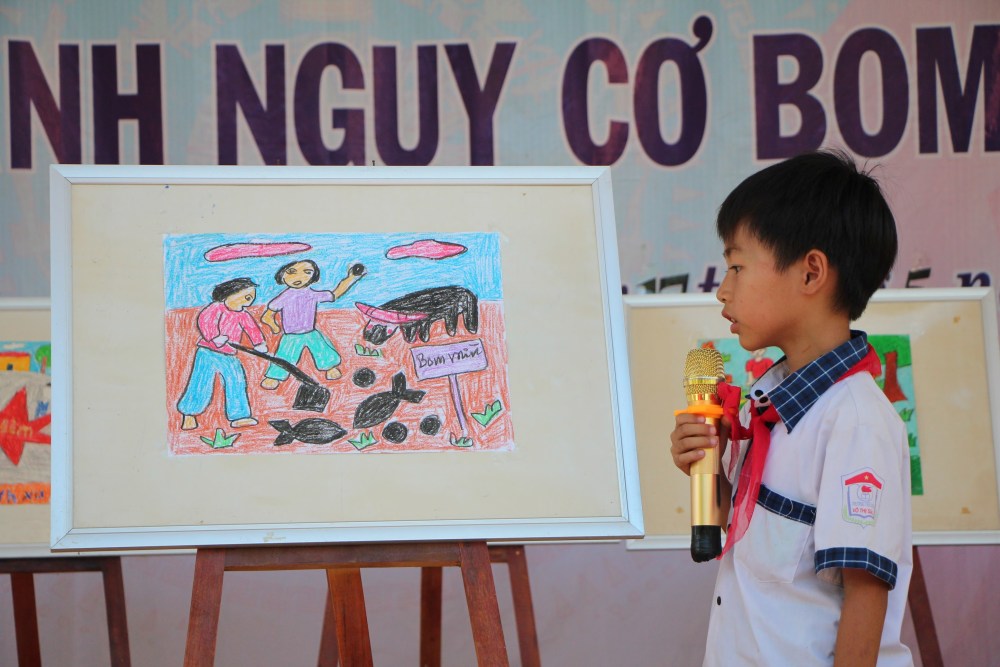Photos courtesy Giang Nguyen
Giang Nguyen is creative director at Behalf Studio in Vietnam, which is currently working for Project RENEW in an effort to remove the dangerous remnants of the costly war in his country.
Giang explains that the 17th parallel in Quang Tri province once marked the political and physical divide between North and South Vietnam, beginning on July 21, 1954. During the Vietnam War (1955–1975), it became one of the most intensely bombed regions, bearing the brunt of a conflict that reshaped not just the country’s landscape but its generational memory.
Nearly five decades after the war’s end, the land still carries remnants of that time. According to the U.S. Department of Defense, roughly 10% of the 8 million tons of munitions dropped did not detonate. The unexploded ordnance (UXO) remains buried across communities, particularly in places like Quang Tri—posing daily risks. Since 1975, more than 100,000 people have been killed or injured by these lingering explosives, many of them children or farmers going about their lives. Survivors often live with permanent disabilities.
In response to this enduring threat, Project RENEW launched in Dong Ha, Quang Tri, in August 2001. Chuck Searcy, a U.S. Army veteran (1966–1969), co-founded it with the local government and international NGOs. What makes this initiative especially impactful is its rootedness in local knowledge—its team is based in the community, fluent not only in language but in the cultural and legal landscape as well.
Below, Giang and I discuss the project, his design education in the U.S., the studio’s achievements and its place in the expanding Vietnamese design community.
Tell us more about Project RENEW.
Project RENEW operates through four key pillars: (1) Survey and Clearance, (2) Risk Education, (3) Victim Assistance, and (4) Advocacy. Their mission is not only about physically clearing the land, but also educating communities, supporting those affected and contributing to global disarmament conversations.
In many ways, this work quietly redefines what it means to rebuild. Not through monuments or sweeping gestures, but by removing invisible threats—by helping people return safely to their fields, their homes, their everyday routines. That, to me, is a form of healing that deserves deeper recognition.
How involved are you from organizational and design points of view?
Behalf and I were initially invited to collaborate on an initiative, funded by the Government of Ireland, aimed at enhancing explosive ordnance risk education for local communities in Quang Tri, through RENEW’s Mine Action Visitor Center. The center is currently serving as an education facility for the younger generations born after the war.
The project brief was open-ended, which gave us both the space and responsibility to help shape its direction. During our visit to the center last year, we met with local representatives and community members. For a team of Vietnamese creatives who grew up learning about Quang Tri merely as a footnote in history books, the experience was profoundly humbling.
We implemented a design solution—the website here—with parallel purposes: (1) serving as an on-site digital platform housed within the center, accessible via touchscreen for community-based learning; (2) an online platform, part educational tool, part data-driven storytelling, to document and share the postwar realities with a wider global audience. The core message we hoped to express was: Wars don’t end when the bullets stop flying. And humanity, unfortunately, hasn’t yet learned from its past.
An important note on our narrative approach: we made a conscious decision not to frame this as a critique or accusation. This is not about revisiting blame. Instead, the focus is on raising awareness about the long-term consequences of war—especially the devastating legacy of cluster munitions—and highlighting the tireless efforts of those working on the ground to restore safety, dignity and hope. We also wanted to honor the resilience of the victims and their families, whose stories deserve a global platform.
Design-wise, this was one of our most challenging undertakings. We worked with decades of UXO-related data (harrowing, to say the least) to uncover meaningful patterns and threads of optimism that could form the backbone of our storytelling. The database itself was vast and complex. It is a daunting task for our project team of six (one creative director, one project manager, and four designers). We analyzed, organized, wrote, designed and systemized the entire experience within the span of four months.
Even after the project’s official closure, I believe there are more that we haven’t gotten the opportunity (and of course, budget) to explore in terms of the project’s extent. There’s so much more that deserves to be told, especially about the use and legacy of cluster munitions, a weapon banned by international law but still deployed in modern warfare. Here’s our Phase 2 proposal.
As a personal mission, I hope to provide longterm support for Project RENEW both as a creative and an academic/researcher. I’m not sure precisely in what form yet but I’ve been reaching out and applying for grants and funding in support of Project RENEW. My personal aspiration is to help elevate this project into something even larger, even potentially transforming the Mine Action Center into a Museum of History that could educate, memorialize and advocate on a global level.
Tell me a bit about Behalf Studio. When did you launch it, and what are your primary clients?
Behalf was founded in 2018, based in Saigon, Ho Chi Minh City, and working worldwide. Behalf is an experience design studio providing creative solutions spanning across different fields of branding (1), graphic design (2), digital design (3), and the yet-to-be-discovered (4). While most of the commissioned projects deal with brand, graphic design and digital design, most of our primary clients are both local and international startups and well-established businesses/institutions—from F&B, hospitality, FMCG to NGOs. Beside commercial outputs, we do pursue unique experiences bordering art and design, and we have a few initiatives (both funded and self-funded) that aim at betterment of community and promotion of local art and culture, alongside research and development for new capabilities in-house:
—Republish: A research project focusing on vernacular typography, aiming to preserve and revive Vietnamese typographic identity by releasing writing and royalty-free typefaces.
—Memos to Make Sense of Us: A typographic expressive platform where people can send messages to anonymous persons in the future. This platform seeks to provide pockets of positivity, aiding individuals in navigating difficult times while fostering an appreciation for art, both visual and written.
—Đà Lạt — City of Arts: An art map project designed to promote sustainable and cultural tourism in Da Lat City post-COVID by mapping curated cultural destinations. (With support from the People’s Committee of Da Lat City, UNESCO and GIZ.)
What influenced you to pursue graphic design?
I started my education as a designer (multimedia) almost 20 years ago, back when the industry was still very rudimentary—and my parents thought I wanted to become a shop sign painter. At the time, I simply wanted to make nice-looking things. Later on, I found myself gradually pivoting toward visual design, with my multimedia background offering a complementary perspective.
What is the design community like in Vietnam?
The design scene here is growing extremely fast. While its history remains somewhat hazy—and the term “design” itself is still relatively new in this context—its roots trace back to arts and crafts, with graphic design emerging alongside colonization. Unlike design as an institution in the U.S. or Europe, Vietnam’s design industry has been repeatedly disrupted by historical events, war and shifting political landscapes.
But in the past 20 years, this very young community has been swept into a whirlwind of globalization. Design has become much more accessible, and we’re now seeing a surge of young creatives working hard to build a design culture from the ground up. Everything feels fresh, energetic and increasingly competitive.
There’s a visible (and exciting) tension between global aesthetics (and the pressure to speak to a global market) and the desire among young designers and entrepreneurial businesses to establish a uniquely Vietnamese visual identity.
Of course, I’m of an age that recalls Vietnam War protests. How has the country and its design changed since the end of the conflict?
Vietnam has developed rapidly over the past few decades, becoming one of the fastest-growing economies in the region. It’s an open market relatively easy to start out in, which has attracted strong foreign interest and investment. It’s also an economy fueled by entrepreneurship. That same spirit carries over into its design industry, where there’s a constant drive to make a mark on the global stage.
What prompted you to attend SCAD?
I attended SCAD because I believed it would provide the formal training I was looking for to develop my capabilities as a graphic designer; their program has a range of things I wanted to learn. I also wanted to learn directly from the design industry in the U.S., and SCAD felt like the right starting point. A 50% scholarship helped make that opportunity possible.
To be honest, SVA was an ideal option as well, if not for the higher tuition and living costs. That said, the charm of Savannah won me over. Its historic buildings and rich past resonated with me deeply, and in many ways, reaffirmed my interest in heritage and cultural remnants. This interest has since evolved into the focus of my upcoming Ph.D. research. Oh, and trees. I love trees.
What design ideas did you bring home and integrate into your practice?
I think beyond the practical skills—which, of course, became a core part of my foundation, from design thinking to typeface design—what stood out the most was how my time in Savannah shifted my perspective on the city I grew up in. I started paying closer attention to the hidden layers of my hometown: colonial-era houses, vernacular typographic signage from the 1940s, overlooked details that quietly tell stories of place and time.
The experience in Savannah deepened my appreciation for the vernacular visual culture here. Especially a stark comparison with a lot of the building here deeply layered with history [that] didn’t get the attention and preservation it deserves. This has shaped much of my research today, which explores cultural memory and the notion of preservation amidst rapid modernization.
Tangent aside, to tie this back to the project: I want to believe in the power of design not just as a creative tool, but as a means to support local communities. To bring in new ways of thinking. To help protect cultures and tell stories.
The post The Daily Heller: Designing for Peace in Postwar Vietnam appeared first on PRINT Magazine.

